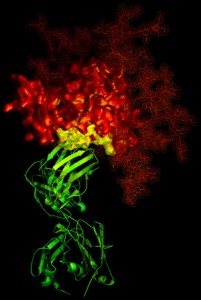WEDNESDAY, 7 DECEMBER 2011
Shalini Prasad and colleagues at the University of Texas, Dallas, have developed a biosensor that can differentiate between Alzheimer's disease and Parkinson's disease by measuring protein concentrations in cerebrospinal fluid. Alzheimer's and Parkinson's are both neurodegenerative diseases, and can be difficult to diagnose in their early stages because their symptoms can be similar. Specific proteins aggregates have been linked to each of the diseases, however, and these were used as biomarkers for the sensor.The biosensor developed by Prasad and coworkers was formed from a porous alumina membrane deposited on a printed circuit board. Fragments of antibodies specific to the disease-unique proteins were attached to the membrane pores. When spinal fluid was applied to the biosensor, this caused the relevant protein to bind to the antibody fragments within the membrane. The amount of binding was determined from the change in capacitance of the circuit board. The sensor successfully distinguished between a control group and patients with Alzheimer's or Parkinson's disease.
Further work is needed to determine whether the biosensor can detect the diseases in their early stages, and the group has already started work on a more sensitive array that they hope to use in pre-clinical studies.
Written by Stephanie Boardman
http://www.rsc.org/chemistryworld/News/2011/November/16111101.asp
M R Sierks, G Chatterjee, C McGraw, S Kasturirangan, P Schulz and S Prasad, Integr. Biol., DOI: 10.10396/c1ib00018g

